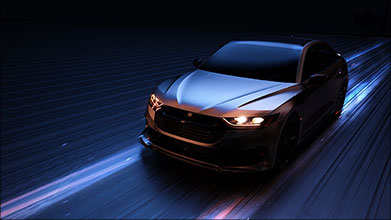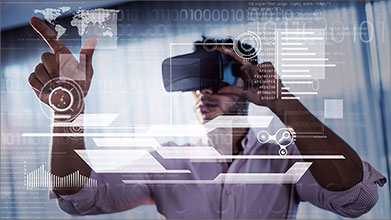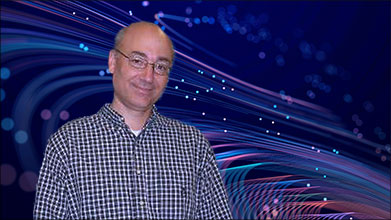Cloud native EDA tools & pre-optimized hardware platforms
Automotive lighting engineers, what might you be missing from your design process that would help you avoid costly redesigns and project delays? Photorealistic visualization.
Photorealistic visualization is necessary in the creative process to evaluate the aesthetics of an automotive lighting design and to accurately predict how the lighting system is perceived by the human eye. It allows you to identify and resolve issues early in the design phase and before manufacturing.

Example of photorealistic renderings of a light guide design in LucidShape CAA V5 Based:
(a) Unlit in an outside environment, (b) lit in a dark environment, and (c) lit in an outside environment
In the Visualize Module of LucidShape CAA V5 Based design software, engineers can use the CATIA-integrated photorealistic rendering capability to generate realistic simulations of their automotive lighting designs. With stunning, physics-based visualization, engineers will be able to see what their automotive lighting product looks like in different environments – as well as in an unlit or lit state — without leaving CATIA.
Using the Environment Light Source and the Human Eye Vision tool to augment the realism in a scene enables you to virtually evaluate how the human eye will perceive a headlight or taillight:
Environment Light Source
The Environment Light Source allows you to integrate photographic environments into a simulation with a luminance camera set up, creating a photorealistic impression of a scene.

Human Eye Vision Image (HEVI) Tool
The Human Eye Vision Image (HEVI) tool is a tone mapper that modifies luminance data so that it appears as a human would see the real scene. HEVI provides many parameters to fine tune your realistic rendering. As an example for red results, Luminance Tone Mapping Amount (LTMA) is a good way to get red closer to orange. Seeing a glare effect is very important to give a realistic impression. It introduces a veiling luminance around high luminance levels in a lower luminance environment. Any glare model can give realistic results: Gaussian, Holladay, or Vos.

Backward Simulations
The LucidShape CAA Visualize Module also supports backward simulations and launches a number of rays per pixel – generally 100 to 1,000. Depending on the simulation setup, an engineer can choose whether a forward or a backward simulation may be more efficient.

Visualization Example, Acura ILX Headlamp

Acura ILX car visualization example
Summary
To summarize, designers who are familiar with CATIA can easily leverage LucidShape’s powerful features to produce, with a minimal learning curve, automotive lighting products that meet performance, styling, visual branding, and regulatory requirements.
Powerful design tools give optical designers the freedom to focus on overall design objectives rather than the implementation details of complex optics. You can use LucidShape CAA’s photorealistic visuals in a presentation to show how the product will look and perform when manufactured. In addition, you can use the tool’s visuals for technical analysis, such as comparing renderings with physical prototypes. Photorealistic renderings influence technical decisions, which are crucial to any lighting designer’s workflow, and ensure confidence in the design before manufacturing.









